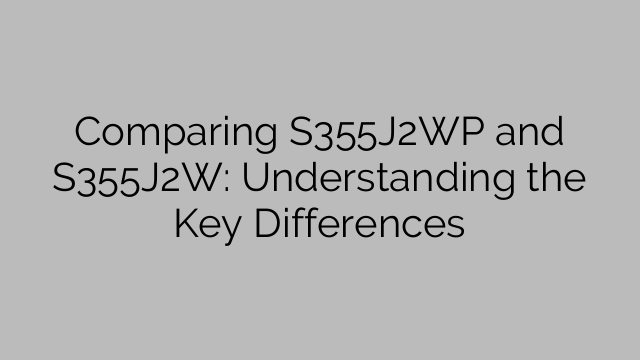When it comes to weathering steel, there are various grades available in the market. Two of the most commonly used grades are S355J2WP and S355J2W. While they may seem similar, there are some key differences that need to be understood in order to make an informed decision about which one to choose for your specific application.
To begin with, both S355J2WP and S355J2W are structural steels that fall under the European standard EN 10025-5. They are designed to provide enhanced corrosion resistance and are often used in outdoor structures and buildings exposed to harsh weather conditions.
The primary difference between the two grades lies in their chemical composition. S355J2WP contains more phosphorus and less copper compared to S355J2W. The excess phosphorus acts as an additional protective layer and enhances the steel’s resistance to atmospheric corrosion. On the other hand, the reduced copper content in S355J2WP provides better resistance against corrosion in chloride-containing environments.
In terms of mechanical properties, both grades have similar characteristics. They have a minimum yield strength of 355 N/mm² and are commonly used in construction and engineering applications. However, S355J2WP has a higher impact strength and a slightly higher tensile strength compared to S355J2W.
Another factor that sets these two grades apart is their application temperature. S355J2WP is designed for use in temperatures up to 500°C, while S355J2W is suitable for temperatures up to 600°C. This difference in temperature range makes each grade suitable for specific environments and applications.
When it comes to the surface finish, S355J2W is often preferred for its aesthetic appeal. It has a sleek and uniform appearance, making it a popular choice for architectural applications and cladding. On the other hand, S355J2WP may have a rougher surface due to the presence of phosphorus, which can affect the desired aesthetics in some cases.
In terms of availability and cost, both grades are widely available in the market. However, due to the added phosphorus content, S355J2WP is generally more expensive than S355J2W. The difference in cost should be considered when making a decision, especially for larger scale projects.
In conclusion, when comparing S355J2WP and S355J2W, it is important to understand the key differences in their chemical composition, mechanical properties, temperature suitability, surface finish, and cost. While both grades offer enhanced corrosion resistance, their specific characteristics make them suitable for different applications and environments. By considering these differences, one can make a well-informed decision on which grade to choose for their specific needs.

